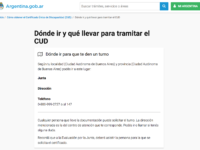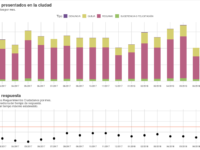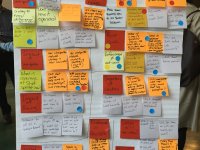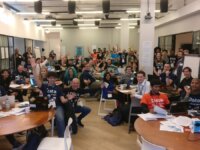Reliable transportation is the primary barrier to stable employment for shift workers. Our solution leverages existing technology to provide “transportation as a benefit” through an integrated network of on-demand transportation options. We will quantify savings for employers due to reduced turnover and increased employee productivity, incentivizing them to fund the program long-term.
Innovation Tag: Digital and Technology Transformation
Bogota’s Citizen Complaints Dashboard (Tablero Control Ciudadano) is a preventive and social control web tool that displays the requirements that the citizens put before the public offices. The Citizen Complaints Dashboard gives access to public officials and citizens to the analysis and monitoring of complaints, claims and compliments entered into the System.
The Citizen Complaints Dashboard highlights alerting data related to issues regarding time of attention to the requirements as well as…
Louisville, like many cities, experienced a spike in homicides starting in 2016. Recent deployment of gunshot detection technology has been effective at pinpointing where and when gunshots occur. On average, police officers arrive long after the critical, first ten minute window to stabilize injuries. Placing drones strategically throughout our city, we will be able to deploy a camera to the scene within 90 seconds of when a gun is discharged and rapidly dispatch emergency medical personnel.
Case Study
Potential for mapping the world’s land resources using satellites and artificial intelligence: an…
The Queensland Government is using machine learning and computer vision to automatically map and classify land use features in satellite imagery. Successfully applied to the mapping of banana plantations, the method is extremely efficient compared to current methods of mapping compilation. Using this technology the Queensland Government can accurately map and classify the land use in a timely manner, aiding response to biosecurity and natural disaster events.
Case Study
The Public Private Collabroation model, eZdorovya, and the transformation of the healthcare system…

17 million of people joined the eHealth in less than 6 months, which is every third Ukrainian. Such growth determined by the Public Power Corporation model of organizational process of the eHealth implementation in Ukraine. It was developed by the state-owned enterprise eZdorovya in cooperation with the government, business, IT and civil society. It enables to create a national highly secure eHealth system fast, effectively and transparently. Today, the eHealth in Ukraine is one of the key…
The Office for National Statistics (ONS) Data Science Campus was set up to work at the frontier of data science and Artificial Intelligence (AI), to deliver research with impact and build capability across the UK public sector. We build skills and apply tools, methods and practices; creating insight to improve decision-making for public good. We work with UK and international partners, drawing on their expertise and resources, sharing the benefits of our education and research programs widely.
The Government Digital Service and the Ministry of Housing, Communities and Local Government launched the Local Digital Declaration to support and unite local authorities around a shared understanding of good digital practice.
It is a unique call to action that addresses the legacy IT contracts, isolation of procurement practices and siloed digital projects that have left local government services vulnerable to high delivery costs and low customer satisfaction for the public they serve.
Globally, public procurement is in desperate need of reform and must embrace the tools, techniques and culture of the digital age. It’s a government’s top corruption risk as it’s where money and discretion collide.
The UK has begun to address this; GDS is leading the Global Digital Marketplace project, which is embedding user-centred, design-led, data-driven and open approaches across digital, data and technology planning, procurement, contracting and service delivery.
This innovation was developed in order to help to prevent interferences, providing a solution for booking frequencies in the general authorization bands.
The main innovation is that this solution is based on the blockchain technology, and open to everybody. This way, our solution guarantees the integrity, the immutability, the transparency, the traceability, the audibility of the reservations of frequencies.
Case Study
Certificado Único de Discapacidad (CUD) – Redesign of the granting service of the Unique…

Obtaining a Certificado Único de Discapacidad (CUD, a disability certificate) in Argentina was a complex, painful and difficult process. It was a citizen’s right, but did was not a digital service. The process lasted up to 7 months and had 4 steps. There is now one step. A wizard guides citizens in the requirements of the application, an online appointment system schedules the interview and proactively provides notifications in the citizen's digital profile. The redesign of the service put…




